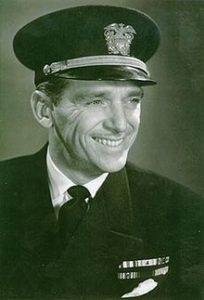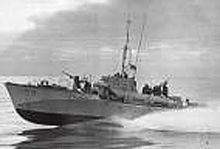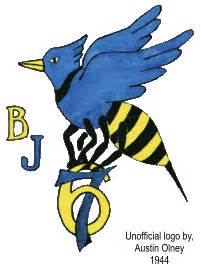 The “jumpers” were U.S. Navy special operations units organized during the war by Hollywood actor Lieutenant Douglas Fairbanks Jr. They specialized in deception and psychological warfare.
The “jumpers” were U.S. Navy special operations units organized during the war by Hollywood actor Lieutenant Douglas Fairbanks Jr. They specialized in deception and psychological warfare.
Lt. Fairbanks was assigned liaison officer to British Admiral Lord Louis Mountbatten, Chief of Combined Operations. Combined ops included the British Commando units. Fairbanks observed the training and execution of the Commando raiding parties. He participated in several cross channel raids and developed a deep appreciation for the military arts of deception.
When he returned to the U.S., he presented his idea for a unit of men trained to conduct tactical cover, diversionary and deception missions to Admiral Ernest J. King, Chief of Naval Operations (CNO). King bought the idea. The call went out for “volunteers for prolonged, hazardous and distant duty for a secret project.” The Beach Jumpers was born. Their Commanding Officer was Lt. Douglas Fairbanks, Jr.
The Jumpers identities and activities were kept highly classified. Their initial mission was “To assist and support the operating forces in the conduct of Tactical Cover and Deception in Naval Warfare.” They learned to simulate very large amphibious landings with very limited forces. Using specialized equipment, a few dozen men could make the enemy believe they were a 70,000-man amphibious landing force, when in fact that force would be a great distance away.
The Jumpers were assigned 63-foot double-hulled plywood Air-Sea Rescue (ASR) boats manned by an officer and a six-man crew. The boats were equipped with twin 50 cal. machine guns, 3.5 in. rockets, smoke pots and generators and floating time-delay explosive packs and sported a top speed of 35-40 knots.
 The boat’s specialized deception equipment was a multi-purpose component “heater,” consisting of a wire recorder, a 5-phase amplifier and a 1000 watt 12 horn speaker. Also on board were Naval balloons to which strips of radar reflective window had been attached.
The boat’s specialized deception equipment was a multi-purpose component “heater,” consisting of a wire recorder, a 5-phase amplifier and a 1000 watt 12 horn speaker. Also on board were Naval balloons to which strips of radar reflective window had been attached.
The Jumpers earned their nickname honestly. They would hit the beach and confuse the enemy with harassment and deception ops, then disappear.
Their first operation was in Operation Husky, the invasion of Sicily. A Beach Jumper boat was ordered to conduct a diversion on the coast, 100 miles away from the Husky landing area. They began at 2200 hours. 3000 yards offshore, an ASR boat cranked up its heaters and began to lay smoke. Two ASR sound boats ran parallel to the beach emitted sounds of a large invasion force. They roared into the beach, firing their guns and rockets. Then all boats high-tailed back to their homeport at Pantelleria, Sicily.
To keep the Germans on their toes, two nights later all available craft repeated their light and sound show. The Germans were fully alerted and fully expected a landing was taking place. They opened up with everything they had at the boats. The boats roared in, making a lot of smoke and noise and then sailed back to homeport at full speed. There were no casualties on the ASRs.
The Jumpers earned their money at Husky. An entire German division was held in position away from the actual landing area. The German brass was unsure where the actual landing would take place.
Shortly after the end of the war, the Jumpers were deactivated. They remained so until the Vietnam War, when they revived their tactical deception operations.
Captain Douglas Fairbanks Jr., the Father of the Beach Jumpers, was awarded the Silver Star, the DSC, the Croix de Guerre and the Italian War Cross among other honors for his service during the war. He passed away in 2000 at the age of 90.

